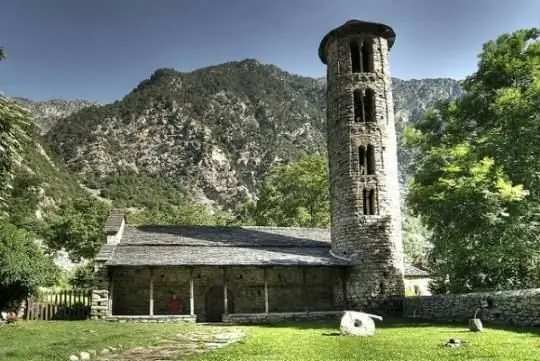
Description of the attraction
The Church of Santa Coloma is one of the iconic sights of the village of the same name, located near the capital of Andorra - Andorra la Vella. The beautiful pre-Romanesque church is one of the oldest architectural structures in this small country.
The church was founded around the 10th century. Outwardly, this amazing temple has a rather ascetic look, that is, it is distinguished by minimal decorative elements. During the construction of the Church of Santa Coloma, gray stone and a minimum of decorations were used.
Like most architectural structures of those times, the temple looks more like a small well-fortified castle than a church. An interesting four-storey bell tower adjoins the monastery on the side. Its main feature is a round rather than a quadrangular base, so the bell tower strongly resembles the watchtower of a medieval fortress. The bell tower has four vertical rows of narrow arched window-openings. The widest are located on the upper floors of the structure, and the narrowest are at the bottom. The bell tower is decorated with a conical roof.
The Church of Santa Coloma is surrounded by a low stone fence with a beautiful arched gate. A cobbled path leads to the church itself across the courtyard.
In the middle of the XII century. the church bell tower was rebuilt by the famous architect Lombard Bell. At the same time, the triumphal arch, as well as the walls of the building, were decorated with frescoes. The church also houses wooden sculptures of the Mother of God of Mercy and icons of the XII century. In addition, you can also see a baroque polychrome altar of the 18th century.







